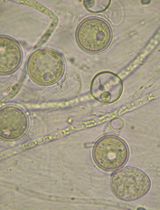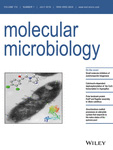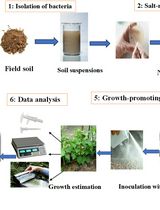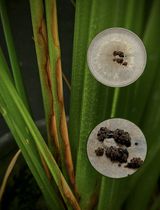- EN - English
- CN - 中文
Competition Assays to Quantify the Effect of Biocontrol Yeasts against Plant Pathogenic Fungi on Fruits
竞争分析以量化酵母菌对水果上植物病原真菌的生防作用
发布: 2020年02月05日第10卷第3期 DOI: 10.21769/BioProtoc.3518 浏览次数: 5316
评审: David A. CisnerosAndrea Paola ZuluagaTohir Bozorov

相关实验方案

微生物提取物对卵菌辣椒疫霉菌和猝倒病疫霉的体外筛选
Mónica Trigal Martínez [...] María Ángeles Vinuesa Navarro
2025年09月20日 1189 阅读
Abstract
Yeasts such as Aureobasidium pullulans are unicellular fungi that occur in all environments and play important roles in biotechnology, medicine, food and beverage production, research, and agriculture. In the latter, yeasts are explored as biocontrol agents for the control of plant pathogenic fungi (e.g., Botrytis cinerea, Fusarium sp.); mainly on flowers and fruits. Eventually, such yeasts must be evaluated under field conditions, but such trials require a lot of time and resources and are often difficult to control. Experimental systems of intermediate complexity, between in vitro Petri dish assays and field trials, are thus required. For pre- and post-harvest applications, competition assays on fruits are reproducible, economical and thus widely used. Here, we present a general protocol for competition assays with fruits that can be adapted depending on the biocontrol yeast, plant pathogen, type of assay or fruit to be studied.
Keywords: Microbiology (微生物学)Background
Biocontrol, the use of organisms to control plant pathogens, pests, and weeds, is an attractive alternative to conventional plant protection methods and can help reduce the amount of chemical pesticides employed in agriculture. Most biocontrol organisms are first evaluated in vitro, under laboratory conditions, but eventually will have to prove their efficacy in extensive field trials over many years. Experimental systems which more closely resemble the conditions of an eventual application than a Petri dish and are at the same time, more defined and less time- and resource-demanding than a field trial, are therefore required for both research and the development of novel biocontrol applications.
The bio-protocol presented here represents a combination and adaptation of earlier methods and is specifically aimed at testing the antagonistic activity of yeasts against postharvest diseases of different fruits. Such assays have for example been used to test for antagonistic activity of various yeasts in oranges (Ferraz et al., 2016), cherries (Oro et al., 2014; Gore-Lloyd et al., 2019), peach (Grzegorczyk et al., 2017), nectarines (Janisiewicz et al., 2010), plums (Janisiewicz et al., 2014), pears (Lutz et al., 2012), grapes (Parafati et al., 2015) and apples (Vero et al., 2009). Apart from antagonism testing, a similar method has also been used to assess postharvest disease resistance of apples (Norelli et al., 2017). The protocol can also be adapted for testing the combined application of biocontrol yeasts with antifungal agents, formulation compounds, plant resistance inducers, or other additives that are envisioned to improve biocontrol efficacy (El-Ghaouth et al., 2000; Yu and Zheng, 2006; Yan et al., 2014). The method presented here is thus easily reproducible, efficient and extensively adaptable for testing and evaluating disease control in a variety of fruits.
Materials and Reagents
- 1.5 ml microcentrifuge tubes (EppendorfTM 3810X microcentrifuge tubes, Fisher Scientific, catalog number: 10451043)
- 15 ml centrifuge tubes (FisherbrandTM PP Centrifuge Tube, Fisher Scientific, catalog number: 11889640)
- Hemocytometer cover glasses (Huberlab, 24 x 24 x 0.4 mm, catalog number: 10.0440.24)
- Trays (Thermo ScientificTM NalgeneTM Autoclavable Polypropylene Pans, 1260 x 159 x 64 mm, catalog number: 6902-1000)
- Sterile miracloth (autoclaved), pore size 22-25 µm (VWR, Millipore sigma, catalog number: EM475855-1R)
- Inoculating loops, inoculating sterile disposable loops (VWR, catalog number: 612-9358P)
- Disposable cuvettes (semi-micro cuvette 10 x 10 x 45 mm, Fisher Scientific, Greiner Bio One, catalog number: 613101)
- Tissue papers
- Fruit pack trays (for apple assays)
- 30 cm ruler
- Custom-made consisting of a wooden handle, a metal cover and a metal nail protruding 3 mm from the tip of the tool; resulting in 3 mm deep and 2.5 mm wide lesions
- Biocontrol yeast (e.g., A. pullulans; available from the Culture Collection of Switzerland under CCOS1008) (maintained at 22 °C on Potato Dextrose Agar plate (PDA) for 72 h)
- Fungal plant pathogen (e.g., B. cinerea (available from the German Collection of Microorganisms and Cell Cultures, DSMZ, under DSM 877), Fusarium sp. (CCOS1020)) (maintained at 22 °C on PDA for 5-7 days)
- Whole fruits (e.g., apples, cherries, plums)
- Potato dextrose agar (CM0139B Potato Dextrose Agar [EP/USP/JP/BP] [Dehydrated], Thermo ScientificTM, catalog number: 10197602)
- Glycerol
- 70% ethanol
- Distilled water
Equipment
- Light microscope (Leitz-Wetzlar; Ortholux)
- Hemocytometer (Neubauer improved, 0.1 mm depth, Huberlab, catalog number: 10.0442.04)
- Spectrophotometer (GE Healthcare NovaspecTM III visible spectrophotometer, Fisher Scientific, catalog number: 10773457)
- Vortex (Ika® vortex, Genius 3, Fisher Scientific, catalog number: 10132562)
- Micropipette P10, P1000 (Socorex: Acura® manual 825 autoclavable adjustable micropipette)
- 3 mm cork drill (cork-drilling kits, Huberlab, catalog number: 13.1118.06)
- Forceps
- Wide bottomed measuring cylinder (3 L)
- -80 °C freezer
Procedure
文章信息
版权信息
© 2020 The Authors; exclusive licensee Bio-protocol LLC.
如何引用
Magoye, E., Pfister, M., Hilber-Bodmer, M. and Freimoser, F. M. (2020). Competition Assays to Quantify the Effect of Biocontrol Yeasts against Plant Pathogenic Fungi on Fruits. Bio-protocol 10(3): e3518. DOI: 10.21769/BioProtoc.3518.
分类
微生物学 > 抗微生物试验 > 抗真菌试验
植物科学 > 植物免疫 > 宿主-细菌相互作用
您对这篇实验方法有问题吗?
在此处发布您的问题,我们将邀请本文作者来回答。同时,我们会将您的问题发布到Bio-protocol Exchange,以便寻求社区成员的帮助。
Share
Bluesky
X
Copy link












